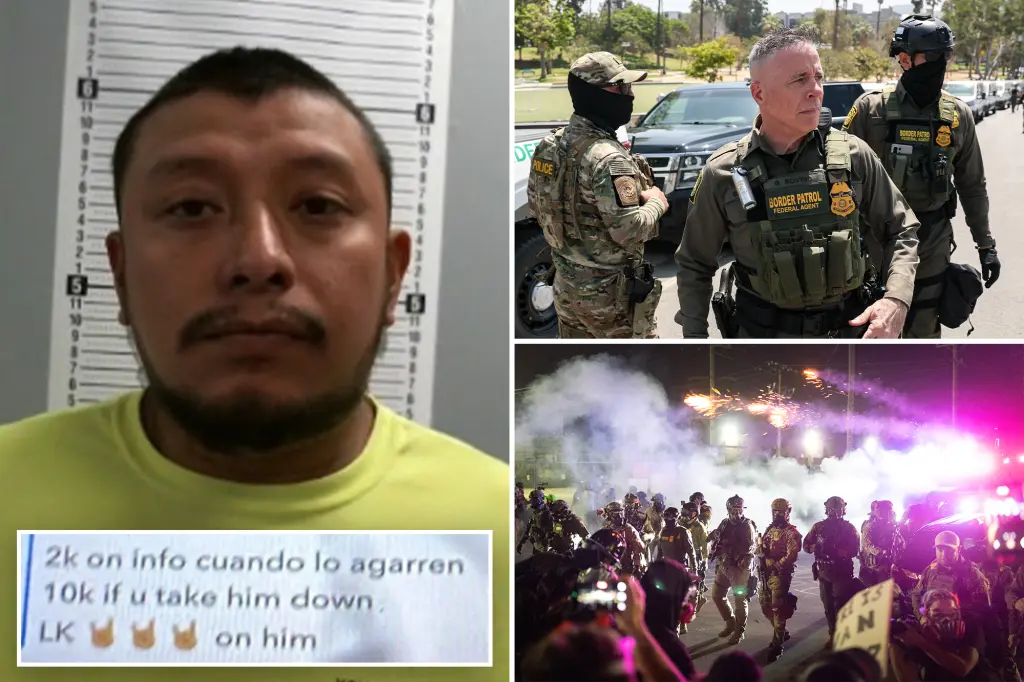Bounty Threat on Federal Officer Reveals Rising Tensions in Chicago
In a sobering development that highlights the growing conflict between law enforcement and street gangs in Chicago, federal authorities arrested Juan Espinoza Martinez, a 37-year-old suspected Latin Kings leader, on Monday. The arrest stems from allegations that Martinez offered cash bounties to anyone who would capture or kill a senior immigration officer involved in “Operation Midway Blitz.” This disturbing case shines a light on the dangerous reality facing law enforcement officials working to address gang activity and immigration issues in one of America’s largest cities. The criminal complaint, unsealed by the US Attorney’s Office for the Northern District of Illinois, charges Martinez with a single count of murder for hire—a charge that carries severe penalties but also reveals the extraordinary tensions between federal immigration enforcement and certain community elements.
According to investigators, Martinez allegedly sent Snapchat messages offering “$2k on information” and “$10k if you take him down,” referring to US Border Patrol Chief Gregory Bovino, who has been leading immigration enforcement operations in Chicago. The messages included a photo of Bovino, making the threat explicit and targeted. Martinez, identified by authorities as an undocumented immigrant from Mexico who entered the United States at an unknown time, allegedly holds a leadership position in the Latin Kings—a gang with a long history of violent crimes and drug trafficking throughout Chicago’s neighborhoods. This case represents more than just a threat against an individual officer; it symbolizes a direct challenge to federal authority in areas where gang influence has traditionally held sway. The timing of these threats appears to correlate with increased federal immigration operations in Chicago, suggesting a pushback against these enforcement efforts.
The threats allegedly came following a police-involved shooting on October 4, 2025, involving Border Patrol agents in Chicago’s Brighton Park neighborhood. According to a confidential source cited in the complaint, Martinez responded by sending Latin Kings members to the area of 39th Street and Kedzie Avenue, ordering them to obtain firearms and patrol territory around 26th Street and South Drake Avenue. This mobilization of gang members in direct response to law enforcement activity represents an alarming escalation in an already tense relationship. The case has drawn strong statements from federal officials, with US Attorney Andrew S. Boutros declaring that “putting a price on the life of a law enforcement officer is an attack on the rule of law” and promising accountability for such “grave criminal actions.” These comments reflect the serious nature of the threat and the federal government’s determination to protect its officers while maintaining its enforcement operations.
Deputy Attorney General Todd Blanche connected this case to the Justice Department’s broader initiative to combat gang violence, framing it within what he called the “Take Back America” effort—”taking back every neighborhood and street corner from violent thugs and criminal gangs and returning them to the law-abiding members of our communities.” This language reveals how federal authorities view this case not as an isolated incident but as part of a larger struggle for control of urban spaces between law enforcement and organized criminal groups. The rhetoric employed by officials suggests a concerted push to reassert government authority in areas where gang influence has been strong, positioning this case as symbolic of a wider campaign against gang violence across American cities.
The arrest of Martinez occurred against the backdrop of a particularly violent weekend in Chicago, during which federal agents arrested two individuals accused of ramming government vehicles in separate incidents. One suspect, Marimar Martinez (no relation specified to Juan Martinez), was shot and wounded during her arrest, while another suspect, Anthony Ian Santos Ruiz, was taken into custody without injury in a similar confrontation. These incidents reflect the heightened tensions between law enforcement and certain community elements during the implementation of “Operation Midway Blitz.” The violence wasn’t limited to confrontations with law enforcement—Chicago police reported 22 shooting incidents between Friday evening and Sunday night, resulting in 29 people shot and four fatalities, a stark reminder of the persistent gun violence plaguing parts of the city.
The Martinez case represents a troubling convergence of several critical issues facing American cities: gang violence, immigration enforcement, community-police relations, and the safety of law enforcement officers. As federal authorities pursue their enforcement objectives, they face not only the practical challenges of addressing crime and immigration violations but also the potential for violent resistance from organized criminal groups with deep roots in certain communities. The placement of bounties on law enforcement officials represents an extreme manifestation of this resistance and poses serious questions about how to effectively implement immigration policies while maintaining officer safety and community trust. As this case moves through the legal system, it will likely serve as a flashpoint in ongoing debates about immigration enforcement tactics, gang suppression strategies, and the appropriate balance between federal authority and community autonomy in America’s diverse urban centers. For the officers involved in these operations, the threat of targeted violence adds another layer of danger to an already hazardous profession, highlighting the personal risks they face while carrying out their official duties.


